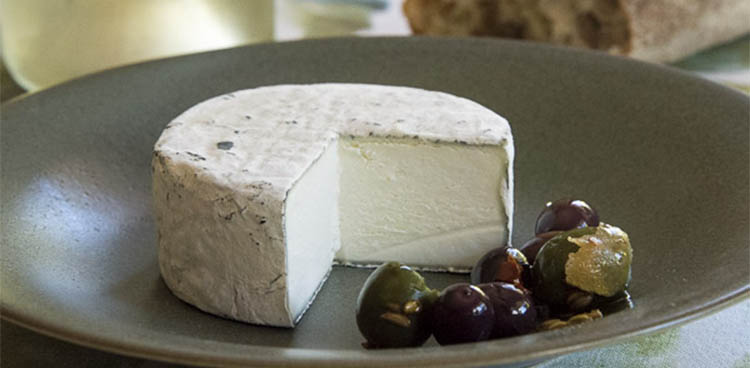
 Planet Cheese is a weekly blog devoted to everything cheese: products, people, places, news, and views. James Beard Award–winning journalist Janet Fletcher writes Planet Cheese from her home in Napa Valley. Janet is the author of Cheese & Wine, Cheese & Beer, and The Cheese Course and an occasional contributor to culture. Visit janetfletcher.com to sign up for Planet Cheese and view Janet’s current schedule of cheese appreciation classes.
Planet Cheese is a weekly blog devoted to everything cheese: products, people, places, news, and views. James Beard Award–winning journalist Janet Fletcher writes Planet Cheese from her home in Napa Valley. Janet is the author of Cheese & Wine, Cheese & Beer, and The Cheese Course and an occasional contributor to culture. Visit janetfletcher.com to sign up for Planet Cheese and view Janet’s current schedule of cheese appreciation classes.
It has been many years since Judy Schad released a new cheese, and here’s the three-word review: Worth the wait. Flora, the newbie, joins the other distinguished goat cheeses from Capriole, Schad’s pioneering Indiana creamery. Maybe you think the planet already has plenty of soft-ripened goat cheese, but I’m willing to bet that Flora floats to the top.
You’ve possibly had some of Capriole’s mainstay cheeses, like Wabash Cannonball and the Bourbon-scented leaf-wrapped O’Banon. My favorite in her line is Julianna, a four-month-old wheel cloaked in herbes de Provence. But precious little makes its way to my neighborhood.
Weighing in at six ounces, Flora works well at a retail counter. “I wanted something more pickup-able,” says Schad, by which she means not too big for most households or too small for a dinner party. Flora is sized to share among four to six people, so most shoppers will take a whole one. That’s a good thing, because retailers hate to cut these wrinkly-rind cheeses. The unsold pieces suffer terribly in plastic.
Resembling a Selles-sur-Cher from France’s Loire Valley, this little goat disk has a cloak of gray ash underneath its rippled white geotrichum rind. The ash reduces the surface acidity, making it easier for the geotrichum to grow. And it’s the geotrichum that helps ripen and soften the cheese, encouraging the oozy layer, or cream line, just under the rind.
A whole ripe Flora will have some give to it; probe it gently in its paper wrap and it should feel a bit squishy, like a ripe peach. If it feels hard, the cheese got too dry somewhere en route—most likely in the retail cheese case, says Schad. These cheeses want humidity to keep that mold progressing on the rind. When they dry out, they basically die. They won’t develop a seductive mushroom scent or the molten cream line just under the rind. The rind will remain hard instead of getting more tender, moist and crinkly.
Capriole ships the cheeses at 10 to 14 days old, when the mold has just begun to develop. That gives distributors and retailers two to three weeks to get it to you before decline begins. That inability to control the final steps of their product’s journey must drive cheesemakers crazy. “I don’t know what’s going to happen on the other end,” admits Schad.
I have sampled Flora at its peak, when it was oozy, mushroomy and a little slumpy when cut. The cheese pictured above is not that. To my taste, it’s too young and probably not going to develop much further—a clear case of arrested development. The flavor was pleasant—tart, clean and appropriately salted—but a bit of a letdown because I knew what the cheese was capable of.
If the Flora you purchase is too firm, Schad suggests putting it, still in its paper wrap, in a lidded container in the fridge. A wine cellar would be even better; the cheese really wants to be held at 56°F to 58°F. Check on it every couple of days. It will soften somewhat, although it probably will not develop that cream layer under the rind.
Schad recommends Sancerre with Flora and I’m on board with that. My favorite is Domaine Hippolyte Reverdy, which my local Whole Foods often has. In California, look for Capriole Flora at Maker’s Common in Berkeley; Milkfarm in Los Angeles; Cowgirl Creamery, Mission Cheese, Other Avenues and Union Larder in San Francisco; Driver’s Market in Sausalito; and Cheesemongers of Sherman Oaks.




